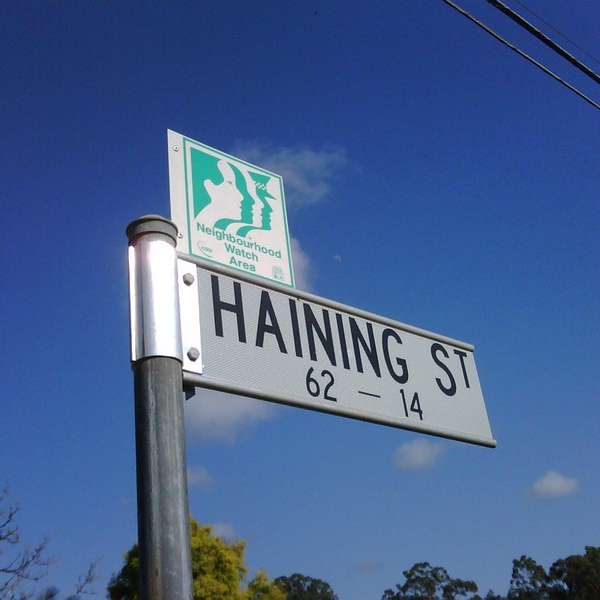EDCI 571
Assignment 1A
September 10th, 2019
“Technology will not replace great teachers but technology in the hands of great teachers can be transformational.” -George Couros
Well it’s been quite the start to the school year already. Excited to embark on a new school year teaching grade 3 & 4, I prepared myself over the summer both my curriculum and also how I would take some of what we explored in our previous two courses and apply them to my own teaching practice. I found myself quite interested in exploring e-portfolios and the fresh grade system focusing on digital demonstrations of learning as a primary form of assessment.
I was informed late last week that due to the district shortage of LST’s, I will now be working as a Learning Service Teacher for my current school for this year, in addition to my administrative duties. Although I have worked in this capacity many times before, I am sad to say good bye to my class.
Having said this, I always try to focus on the positive. I have tried to shift my focus and thinking on how I can support the students on my case load using technology, furthermore re-imagining what role technology can play in my current practice working in Special Education.
“One of the most important aspects of technology in education is its ability to level the field of opportunity for students.”- John King
The use of technology in the classroom can be a powerful tool for transforming learning. Technology can help to affirm and advance relationships (both student and teacher), reinvent our approaches to learning and collaboration and minimize longstanding equity and accessibility gaps and adapt learning experiences to meet the needs of all learners.
In reflecting on the technologies available, looking at how technology can be incorporated into everyday teaching practices and how these technologies can enhance the overall learning experiences, makes me think about how I will incorporate these ideas in my own teaching practices. My comfort level is definitely a limitation as well as what we have available. Having said this as I mentioned in our previous course I feel that the school district I work in (School District 52- Prince Rupert) is relatively rich with accessible technology for its size.
In looking through the blogs and articles provided to us for this week reading I feel that the integration of such technologies mentioned in our reading lead us to think about how technology is able to:
- Increase student engagement
- Meet the needs of diverse learners
- Increase accessibility, mobility and creativity
- Create more equitable learning opportunities by having a variety of access points
- Enable students to demonstrate their learning through diversified learning styles
- Support students with communicative difficulties
- Develop transferable skills
I feel like in one way or another all of the reading samples spoke to address one or more of the previously mentioned benefits of increasing the usage of educational technology in the classroom.
Using Technology in my classroom
I think I try to use technology as much as I can, despite being shy around it. I try to find ways to incorporate the use of technology into my everyday teaching practice and if nothing else and explore, play and introduce new technologies to my students, hopefully providing them with enough exposure to decide whether or not they will find these systems useful in their overall learning experience.
The use of technology has increased accessibility but also alleviated a lot of other concerns that previously existed, including the financial costs for parents. One example of this I have found, is the use of the scientific calculator. There are so many apps available now on cell phones that there is less of need for parents to purchase the traditional scientific calculators.
I can appreciate technology designed to bridge the difficulties with communication. Having had a few students in my class with communicative challenges, programs that can support as communicative devices such as Proloquo 2 go can be incredibly useful providing students with a voice.
I can see how as Steven Lahuillier’s blog on the Top 10 K-12 Educational Technology Trends speaks to the idea of using wearable technology would be helpful for students with exceptionalities, especially those who have communicative difficulties. Wearable devices such as watches, allows for increased student engagement and participation and supports student motivation by providing encouragement and praise. It also speaks to the idea of making demonstrations of learning more accessible to students who otherwise may be too shy to share their knowledge. I have used Ipads to allow students to create videos using their peers and other school props to demonstrate their understanding of certain concepts. This alleviates any concerns with students feeling shy about getting up and presenting, as they can simply play their video for their peers without worrying about standing up in front of their entire class.
What is trending now?
When I think about increasing student engagement, the notion of game-based learning comes to mind. Steven Lahullier speaks to this. “From the days of playing PowerPoint Jeopardy for test reviews to app-based game creation applications, integrating games, technology, and education will continue to be a popular approach.”
Our school has explored the concept of teaching coding skills through fun app-based games and has participated in Hour of Code activities which teach students basic computational skills. Scratch is also something that has been hugely popular in our district, which teachers’ students how to piece together basic computer coding to create their own customized games.
I personally don’t use social media platforms in my class, however I can see how this technology can support teachers to provide instant feedback and improve relations with students as well as keep parents informed.
“In education, technology can be a life changer, a game changer, for kids who are both in school and out of school. Technology can bring textbooks to life. The internet can connect students to their peers in other parts of the world. It can bridge the quality gaps.”- Queen Raina of Jordan
In addition, something that resonated with me when looking at providing students with accessible technology to support their educational journey, was the concept of institutional limitations, or the fear of being stigmatized for disclosing a disability. While universities are often technology rich, and technological resources are put in place to best meet the needs of students with exceptionalities, many of these technologies are not made available and accessible to all learners, but rather those who disclose their learning disabilities. This creates unnecessary vulnerability, but also creates lower rates of awareness of educational technology available to make curriculum accessible for all.
As with UDL, so should educational technology. We might assume that certain technologies will make learning more accessible for a select few students, but we would be wrong to assume this. Technology used to support education today can make learning more engaging, accessible and equitable for everyone involved.
I am a bit skeptical about the concepts of AI, where machines are designed to evaluate students’ competencies through the use of learning machines, which design algorithms to create study guides to direct student learning. While I can appreciate that these services are designed to be cost-effective and personalized, I question the level of personalization. In my opinion you cannot beat the interaction and personal connection you get from conferencing with a student and engaging in meaningful conversations that guide and direct your teaching path, as well as inform your understanding of how to best help your students with their unique and specific learning needs.
In addition, the other trend I don’t agree with is the concept of students having their own personal technology within their school. An example of this was a netbook program that our district used while I taught at the local middle school. The concept in theory was great, where each student is assigned a netbook, which travels with them from grade to grade and then eventually was meant to go with them as they transitioned to high school. This idea sounded really great, however the updating and general maintenance of these netbooks did not appear to be taken into consideration, and therefore this initiative was not successful. Students ended up with netbooks that were glitchy with inadequate technological support to keep the apps and programs up to date. By the time most students completed middle school, these netbooks were ready for the recycling bins.
Technology now…. Technology in the future…
Reading the Holland article was surprisingly like looking into a glass ball and predicting the future. The predictions were incredibly accurate with where technology is moving and at what pace. It is true with the speed of technology, it is moving so incredibly quickly we often don’t see the shortfalls before it is too late. I often find this with my own learning and usage of technology at school. Just as I am getting familiar and comfortable with using a particular platform or piece of technology, something new has come out and replaced it.
I especially liked the section on motivation. Using technology to provide insight and motivate instructional learning environments, increases engagement, promotes a sense of ownership to learning and makes learning more meaningful and relevant. As the research from Wlodkowsky states, “motivated learners include the desire to, learn, work, meet a need, personal value, reach a goal, complete task, engaging, curiosity, successful effort or ability, achievement, and personal responsibility.” (Jarman, B. pg. 19.)
Conclusion
When we incorporate technology into our everyday teaching practices it allows teachers to support students in meaningful ways which enhance their learning experience and allow them to meet their unique learning needs. Technology has opened the doors further to enable students to demonstrate their learning in a multitude of ways based on specific learning styles. By increasing student exposure to technology as a way to supplement everyday learning, students gain new opportunities, which increase creativity and overall production, while introducing students to various technologies. This allows students to gain new skills which they can use throughout their school career and beyond.
Technology is not something that should take the place of paper and pen tasks or traditional teaching methods involving reading and writing, but rather supplement everyday teaching practices. Although we are often met with financial limitations or the fear or trying something unfamiliar, incorporating technology into our teaching practice is vital and something that we should not deprive our students of. My personal comfort level with technology is not where I would like it to be, however it is important to gain exposure to various technologies in hopes of enhancing the overall experience. I am finding that exploring the use of new technology in the classroom setting is something that we can do where we are all learning together.







Recent Comments